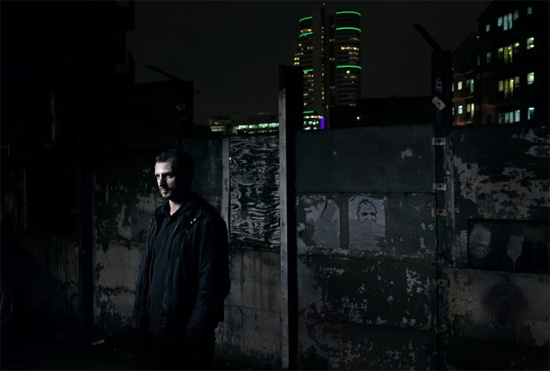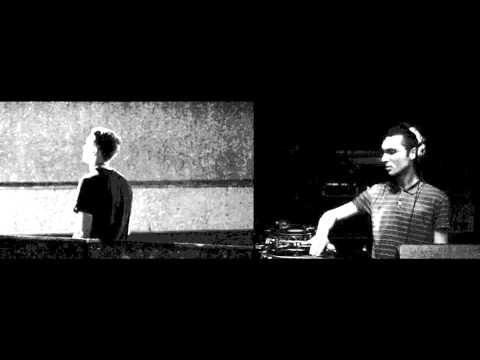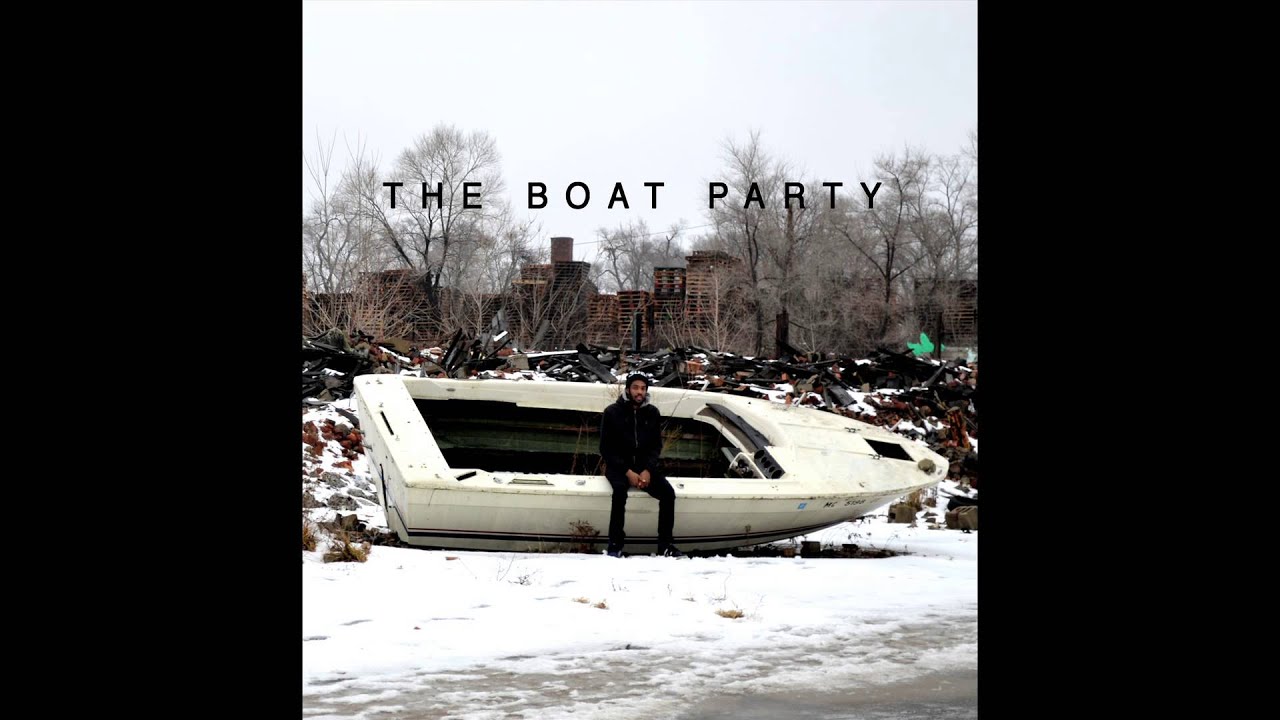Hello, and welcome to May’s edition of Hyperspecific, a monthly (or thereabouts) column bringing together some of the most interesting and exciting new releases within the realm of electronic and dance music. It’s been about eight weeks since the last one, so I suppose officially there’s some catching up to do. Which, I’m afraid, is the best I can do by way of excuse for the rather large size of this month’s column. A couple of cups of tea and possibly a break in the middle should help.
I’m sure I say this every year, but 2013 so far really has felt like one of the most exhausting periods I can remember for electronic music worth keeping up with – there’s just been so much of it. To be honest, there’s a tipping point at which it simply reaches saturation (both for the mind and wallet). It’s then when spending time on dancefloors, and being buffeted around by music you don’t recognise at crushingly high volume, becomes not only a pleasurable pursuit but a vital reminder of the reason you became interested in this stuff in the first place.
A few such experiences in the past month have proved particularly winning in that sense: Editions Mego’s all dayer at Bexhill’s De La Warr Pavilion (more on that here), BleeD’s bringing together of Morphosis, Container and John Heckle at Corsica Studios, and an Oscillate Wildly session at the same venue featuring Peverelist, Elgato, Beneath and Special Request (pictured, above).
The impressively coherent feel of the latter (sadly under-attended) night prompted me to once again to consider some emergent ideas in UK club music. The first section of this month’s column offers a run through of several exciting missives of British sub-driven, rave-and-pirate-radio influenced techno. Go out dancing to this stuff soon, it’ll do your soul and your insides some good.
Pearson Sound – REM
(Pearson Sound)
Special Request – Vapour / Mindwash
(white label)
Pev & Hodge – Bells
(Punch Drunk)
Pangaea – Viaduct
(Hadal)
Sensate Focus (Mark Fell & Mat Steel) – Sensate Focus 2
(Sensate Focus)
Almost exactly a year ago I wrote an edition of this column discussing the ways in which Hessle Audio’s Pangaea and Pearson Sound, Peverelist, Kowton, Elgato, Szare and others were opening up a shared musical dialogue that melded house/techno with sub-loaded British club music styles. "If you were to be slapdash about it," I said at the time, "the space they all inhabit is closer to some very flexible, non-dogmatic concept of techno, than to the bass music masses that have drawn dubstep’s legacy elsewhere. But for many Bristol producers and the Hessle Audio collective especially, UK genres – dubstep, garage, grime and jungle – still lie right at the roots of what they do … both in a metaphorical and in a literal sense."
That particular zone of interaction has continued to play crucible for some wonderful, exploratory dance music in the twelve months since then. But what’s particularly gratifying is that the shared traits that connect these producers together remain tough to pin down. They’re definitely present – Pearson Sound’s new REM 12", Pangaea’s Viaduct, Elgato’s Dunkel Jam 12" from last month and Special Request’s ‘Vapour’ share common atmospheres, colour schemes and beats that swing, shuffle, duck and dive. But with each artist approaching their music from different angles, with varied influences and personal histories, these similarities are far from being anything so strict as genre conventions.
Similarly, rumblings from the Keysound label roster at the moment, courtesy of producers like Beneath, Logos and Visionist, tap into a similar zone – the label’s recent This Is How We Roll compilation contains some thoroughly impressive stuff – while drawing more overtly from grime and early dubstep. The same is true of Kowton, who’s been on a roll for the last year; his recently released ‘TFB’ is a filthy, demolition-ball grime/techno monster, and if you haven’t yet picked it up then do so, post haste. And you could stretch further still, out to outliers like Lee Gamble, Actress and Miles Whittaker (of Demdike Stare), whose work seeks out points of contact where their own personal histories in UK pirate radio music interact with broader techno and house narratives.
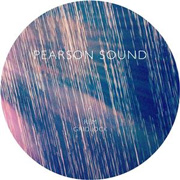
The four tracks that make up Kennedy’s new self-released 12", REM, operate in the same vein as his material on the RA mix. Fitting the EP’s title they’re dreamlike but skittish and fluttery, always resisting the temptation to explode into outright action, instead chugging along in a mesh of technoid drums and fat bass booms. ‘Gridlock’ and ‘Crimson (Beat Ritual Mix)’ use that palette to explore vaguely junglist ideas. The latter’s breakbeat rhythms are turbulent and violently choppy, while open cymbal hits coalesce into a silvery jetstream that rushes headlong through the high-end, making the track feel like it’s zooming along much faster than it actually is.

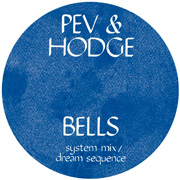
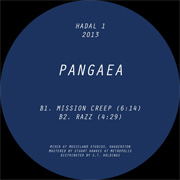

Laurel Halo – Behind The Green Door
(Hyperdub)
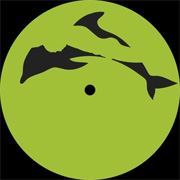
They find Halo subverting club music’s usual hierarchy of components: sub pools thickly in the basement, a sticky, treacherous presence, while the usual carriers of propulsive drive – high-end percussive elements – flit, ghostlike, near the surface of the mix. Meanwhile static crackle, clouds of melodic gas and what could almost be human voices slice and bleed into the mix from seemingly somewhere else entirely, as though a neighbouring pirate radio station were competing with Halo for the same frequency band. Confusing to dance to, perhaps, at least in a conventionally peak-time sense of the word, but indisputably still pure body music. These tracks are dynamic systems that assert their physical presence at every turn. Their component parts and their relationships to one another are volatile, constantly reshaping themselves to follow the changing postures of dancers’ bodies, never settling in one place for long enough to become predictable.
Halo may hail from the States, but Behind The Green Door connects more explicitly to a British rave tradition of rhythmic fluidity and exploration than anything she’s done to date. There’s a clear musical kinship between the music I’ve written about above (the likes of Elgato, Sensate Focus and Pearson Sound) and the bounding groove and hollow hi-hat ticks of ‘Sex Mission’ and ‘Throw’. Meanwhile ‘NOYFB’ ventures farthest from whatever imagined dancefloor you might choose to locate the EP on, and does so to tremendous effect (texturally at least it reminds me of Bee Mask’s When We Were Eating Unripe Pears album). Its fleet-footed percussion heel-toes just to either side of the track’s core pulse, while bell-like struck tones stretch out into echoing infinity, and a distant bleeping alarm runs almost imperceptibly in the background, just enough to set the senses on alert.
KMFH aka Kyle Hall – The Boat Party
(Wild Oats)
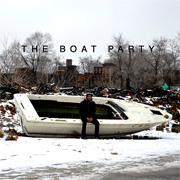
Like those artists, Hall’s music is tremendously expressive using few elements, and much of its power comes from its straight-to-tape rawness. ‘Crushed’ and ‘Measure 2 Measure’, two of The Boat Party‘s highlights, pull off that Parrish trick of wringing every last ounce of emotion and rhythmic potential from a brief, looped soul sample. Set amidst crumpling drum machine percussion, the former’s vocals are treated roughly but with tenderness – they glide in and out of earshot, but their presence is always felt through a distorted glow that radiates outward through the mix. ‘Dr. Crunch’ is the most techno-leaning track here and recalls Shake’s music, its metallic almost-melodies contorting around its roughshod drum skeleton as though played off a warped slab of wax. ‘Finnapop’ dials up the tempo for a jittery slice of ghetto house that ends with two minutes of distant roar that glitches like an explosion chopped into extreme slo-mo.
In a wider context, The Boat Party also reflects upon shifts currently occurring within global dance music. The album’s title and artwork – Hall sat on a dilapidated boat, in front of a row of derelict housing blocks – consider the growing disconnect between the glamour associated with mainstream dance music (especially with the rise of US EDM), and the economic reality for most musicians and listeners at ground level. Indeed, the album – as raw as freshly mined ore – places itself firmly at ground level, engaging with the work of contemporaries across the globe. In it are ideas that link outward to Actress’ post-techno deconstructions and the acrid funk of Hall’s sometime collaborator Funkineven, the murky psychedelia of Morphine and Workshop, and the harsh basement jack of the LIES crew.
More so than on any of his previous recordings, The Boat Party‘s tracks appear to play out in real time – you can hear Hall’s physical presence within the music, switching back and forth between pieces of gear, roughly tweaking the parameters of a vocal loop, chopping between percussive arrangements at the flick of a switch. The album’s enthusiasm is infectious: with seemingly very additional processing added along the way, it preserves almost perfectly the bright, spontaneous energy of Hall’s studio recordings. That playfulness is underlined neatly by a recent mix for Resident Advisor that accompanied the album’s release. Recorded straight to cassette tape for that fun, fraying-round-the-edges feel, it stops in the middle with the distinctive clunk of one side of the tape coming to an end. A brief pause while Hall flips the cassette, and the mix starts again, mid-track. A tiny detail, but a lovely one, and a mixtape well worth downloading before it’s archived.

